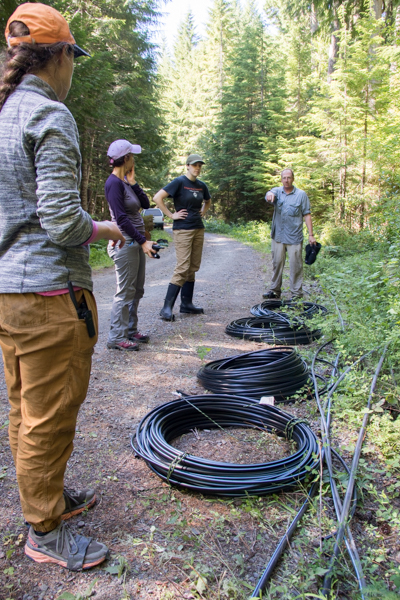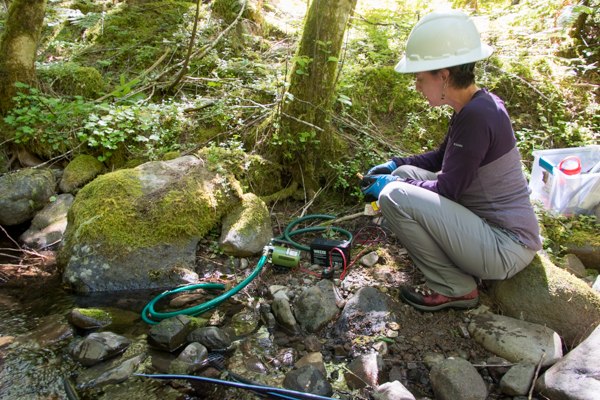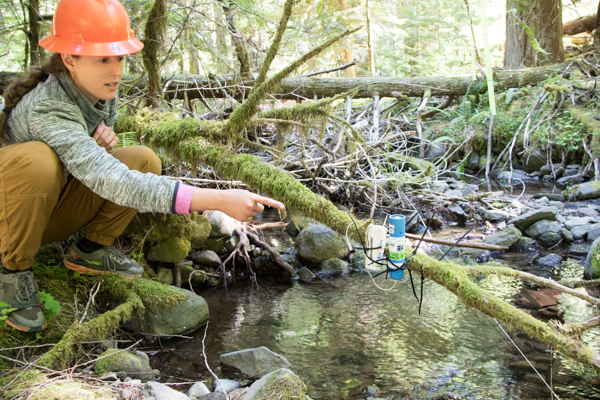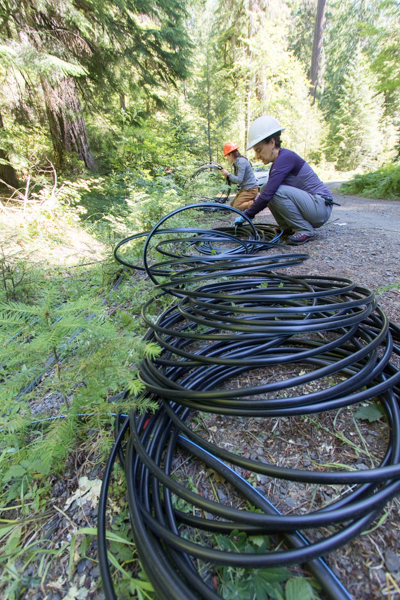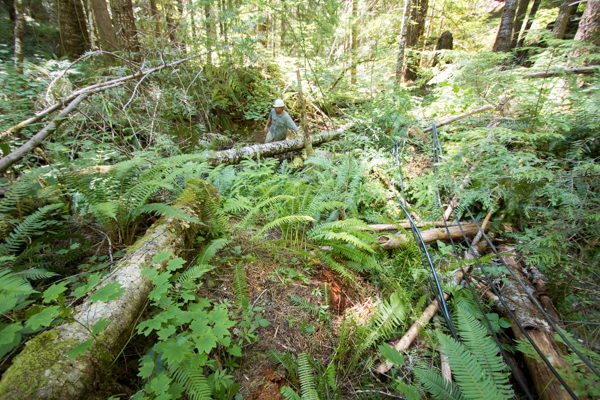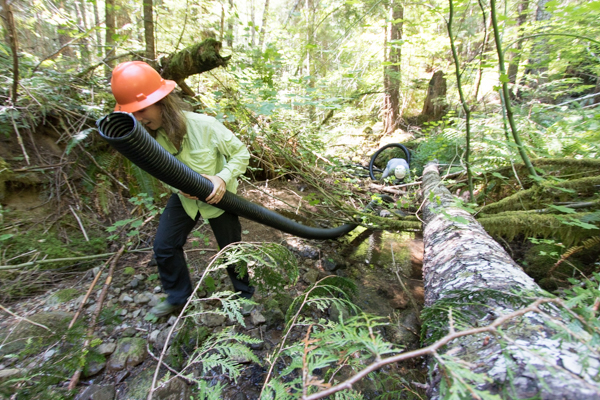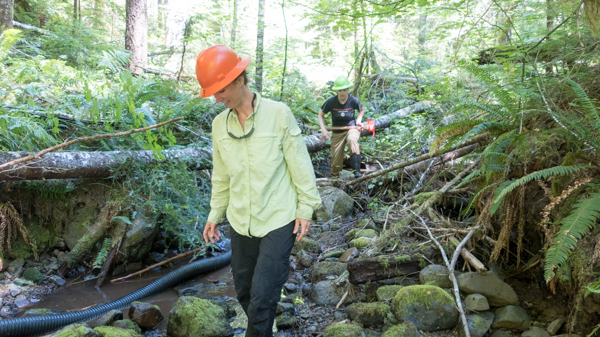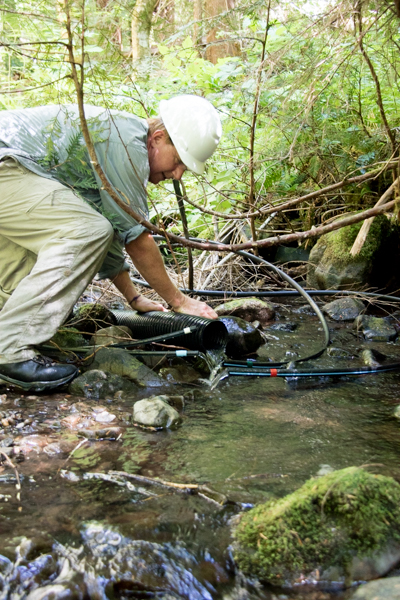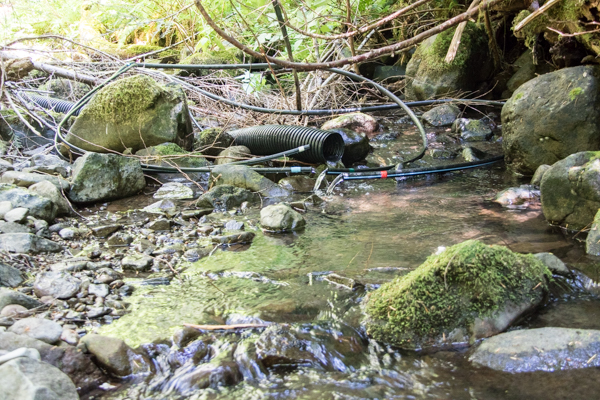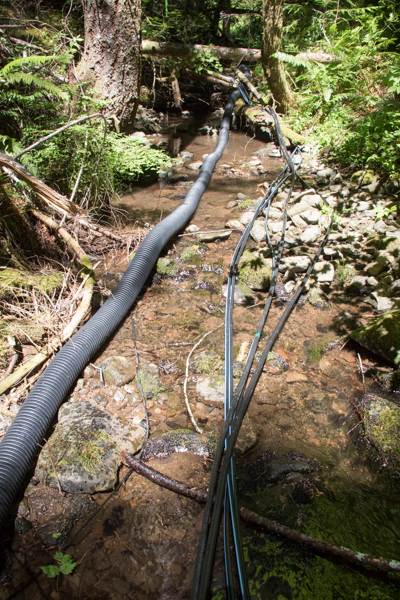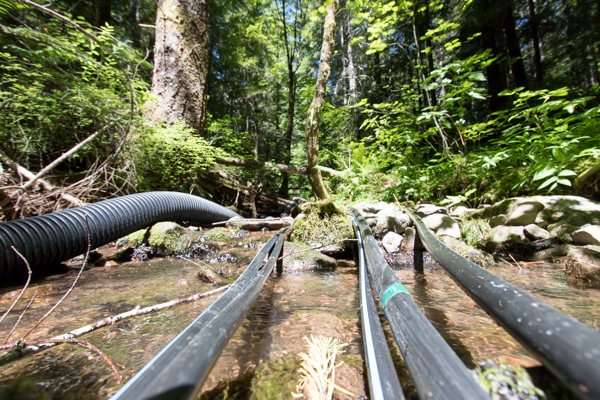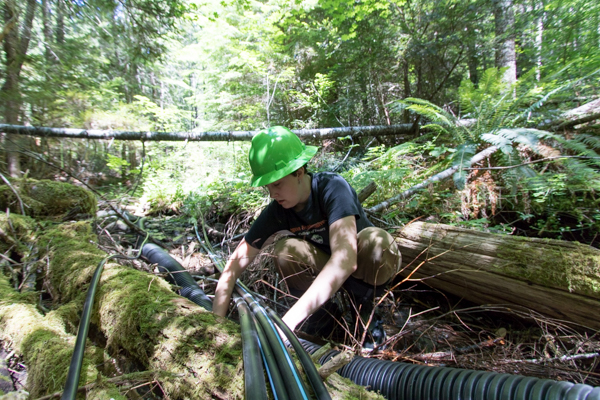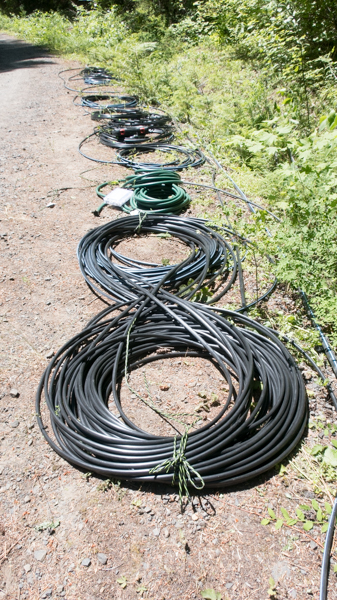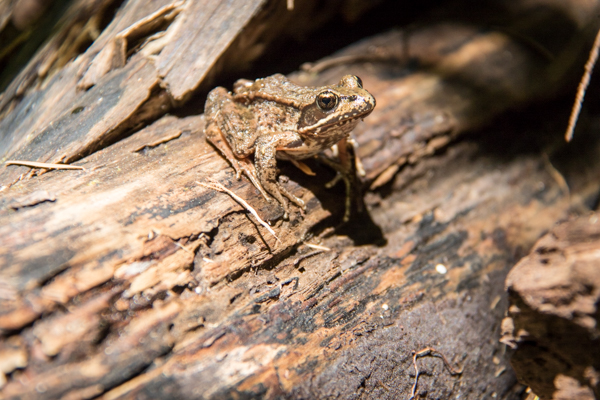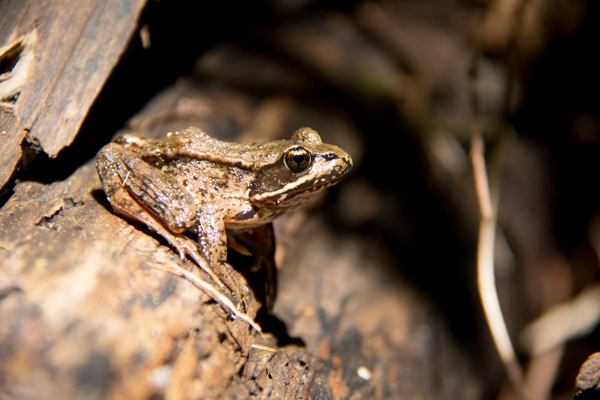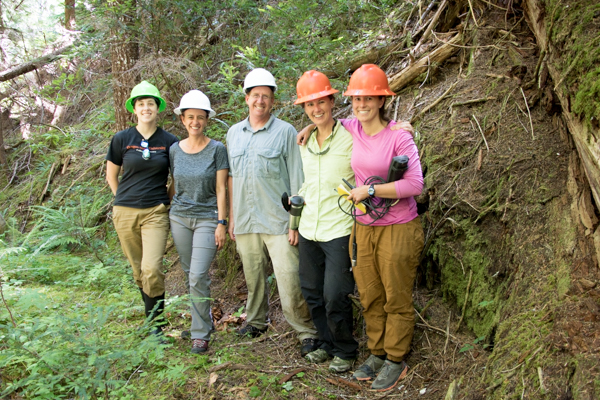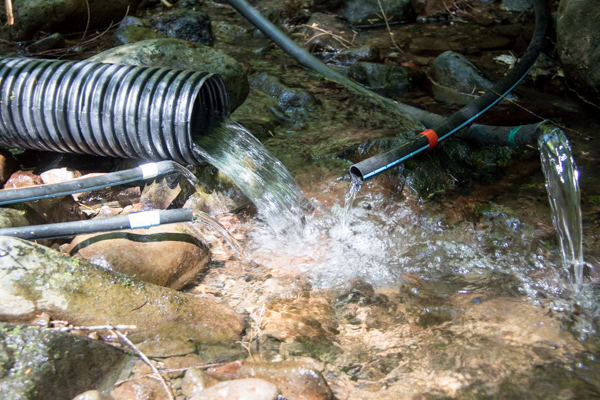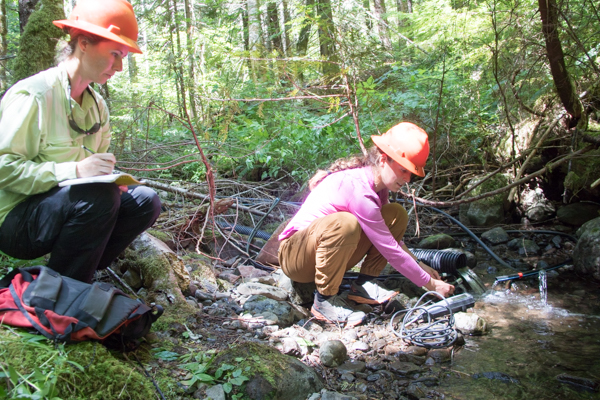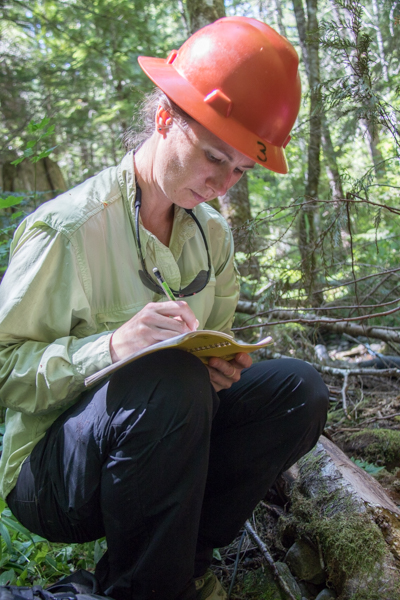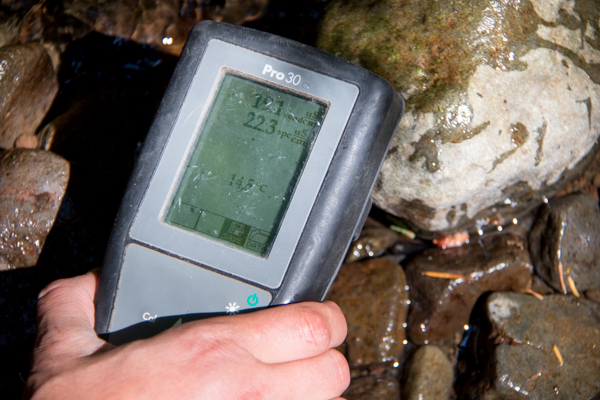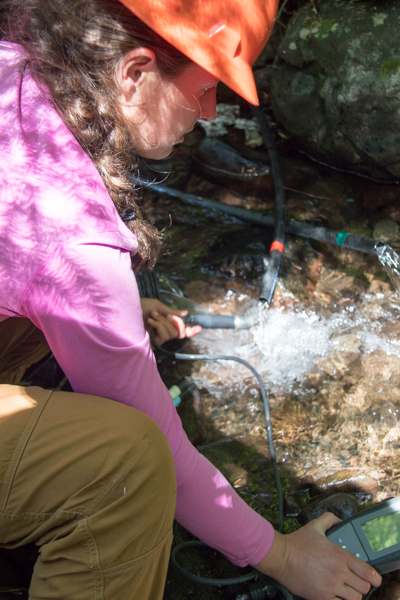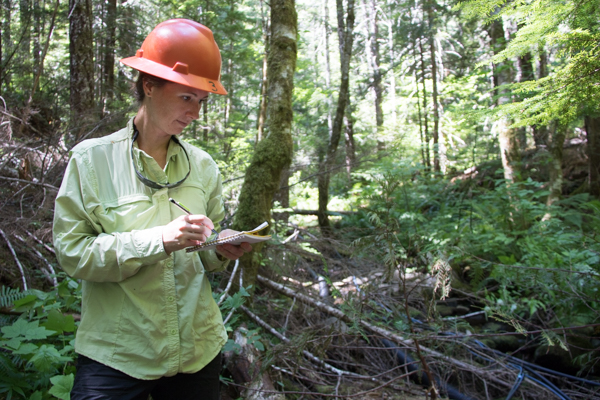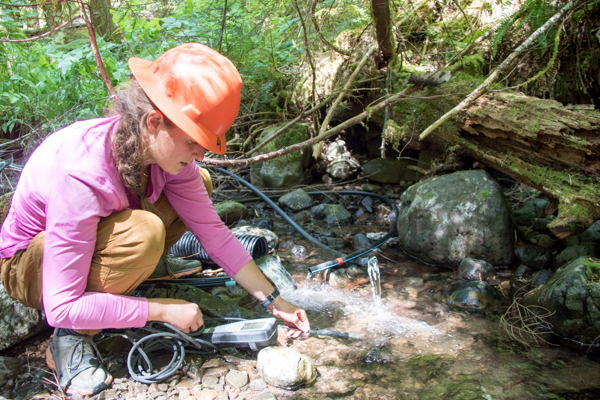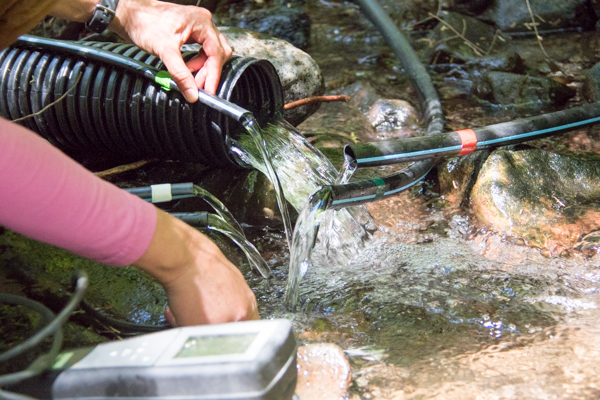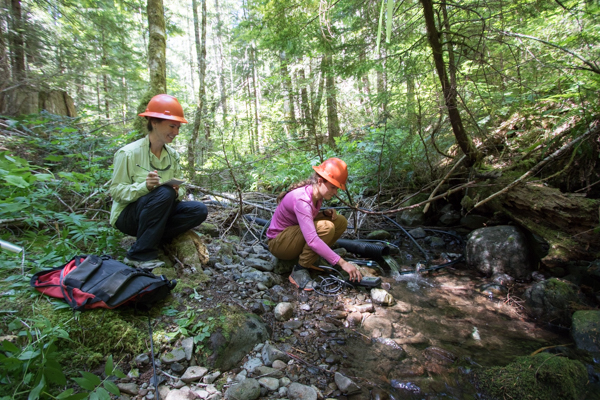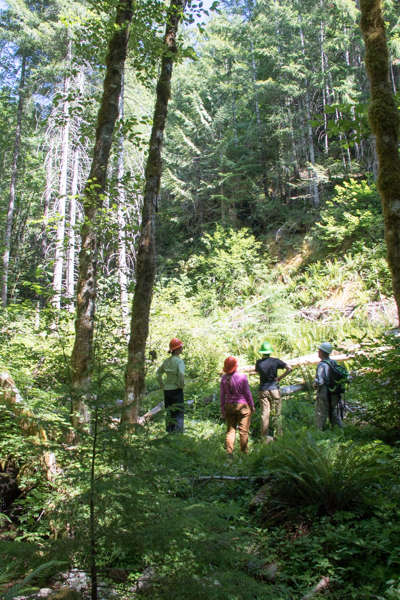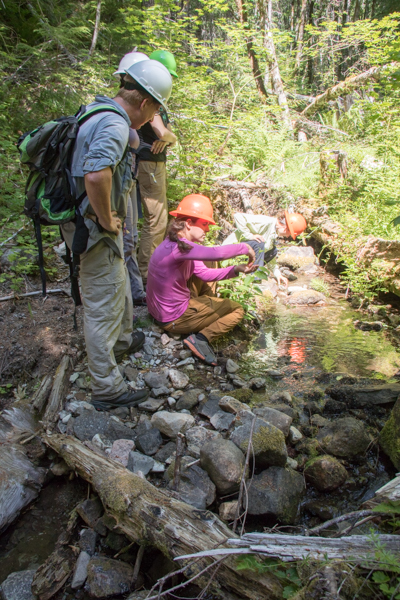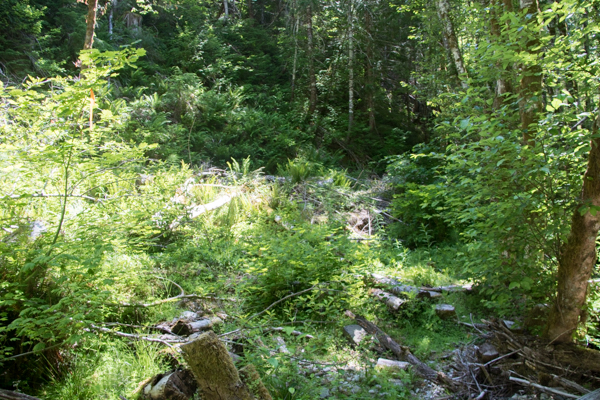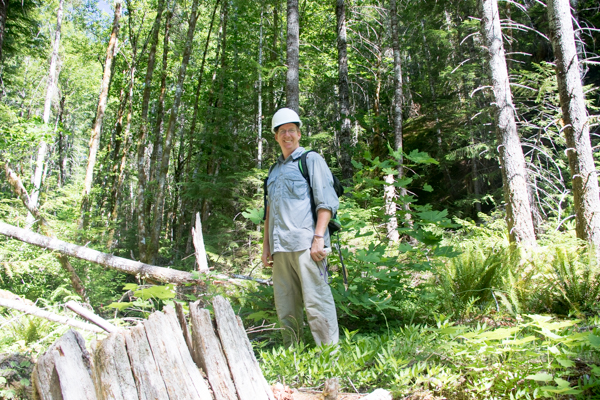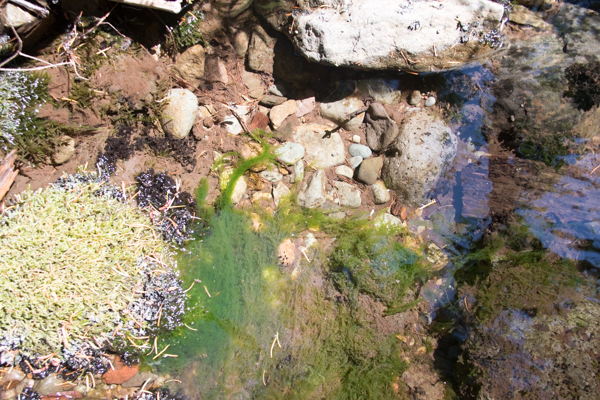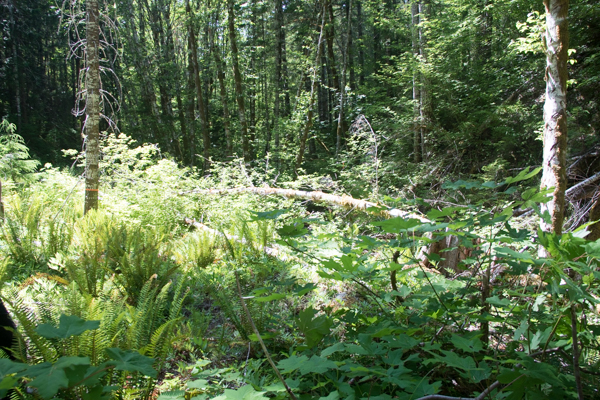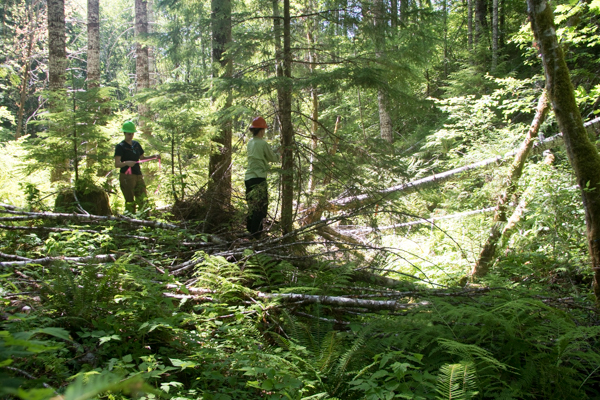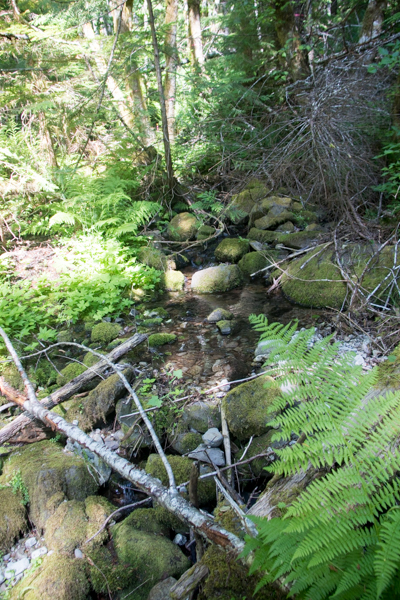coils of tubing in the sun warm the stream water
Drought Experiment 2021
Dr. Dana Warren, Dr. Catalina Segura, and graduate student Allison Swartz are exploring how drought conditions affect streams and the animals that live in streams. Under low-flow conditions, trout and salamanders aggregate in pools or cooler water, increasing competition for macroinvertebrate prey, and causing reduced growth and survival. Groundwater inputs may reduce the severity of drought effects on stream flow and temperature. In 2021 the researchers tested their ideas and techniques by conduct a pilot drying and warming experiment in a stream at the Andrews Forest. They created separate sections of stream with (a) low flow and (b) elevated temperatures (using passive heating of water traveling through black coils of tubing before returning the water to the stream). They measured groundwater contributions using longitudinally distributed temperature sensors and synoptic measurements of O18. In the study and control stream sections, they measured prey availability, fish and salamander individual growth, abundance, survival, and use of deep pools. The researchers will use the information from their pilot study to inform how they set up a larger experiment, to test drought conditions and groundwater input.
Catalina Segura checks the pump and tubing
Postdoc Keeley MacNeill, PhD student Allison Swartz, and PI Catalina Segura work on tubing for the experiment
Graduate student Allison Swartz points out air temperature and PAR (photosynthetically active radation) sensor above the streambed
tubing is used to divert and warm water
pump and tubing used in the dewatering experiment
Catalina Segura (front) and Allison Swartz (back) work on coils of tubing used to warm the streamwater
Allison Swartz and the coils of tubing for the warming experiment
A large tube is used to divert water, bypassing a section of the stream to create drought conditions
A large tube is used to divert water, bypassing a section of the stream to create drought conditions
A large tube is used to divert water, bypassing a section of the stream to create drought conditions
A large tube is used to divert water, bypassing a section of the stream to create drought conditions
A large tube is used to divert water, bypassing a section of the stream to create drought conditions
Keeley MacNeill and undergraduate student Melissa Mauk
Dana Warren in the with the large tubing used to divert water past a reach of the stream
Dana Warren inspects the outflow of the tubes that are delivering diverted water and warmed water from upstream
the outflow of the tubes that are delivering diverted water and warmed water from upstream
Large tubing was used to divert water from upstream; small tubing was used to divert and warm water from upstream
Large tubing was used to divert water from upstream; small tubing was used to divert and warm water from upstream
Undergraduate student Melissa Mauk works on managing the tubing for the experiment
coils of tubing in the sun warm the stream water
Catalina Segura and Allison Swartz manage the many coils and meters of tubing and hoses
Dana Warren and Melissa Mauk Check that the large tube is delivering water
A red-legged frog (Rana aurora)
A red-legged frog (Rana aurora)
A red-legged frog (Rana aurora)
A red-legged frog (Rana aurora)
Melissa Mauk, Catalina Segura, Dana Warren, Keeley MacNeill, Allison Swartz
Melissa Mauk, Keeley MacNeill, Allison Swartz, Dana Warren, Catalina Segura
Melissa Mauk, Keeley MacNeill, Allison Swartz, Dana Warren, Catalina Segura
Dana Warren takes a break from installing and inspecting tubing in the streambed
the outflow of the tubes that are delivering diverted water and warmed water from upstream
Keeley MacNeill and Allison Swartz measure temperature at the outflow of the tubes that were heating in the sun
Keeley MacNeill records water temperature
Allison Swartz measures stream temperature from coils of tubing for the warming experiment
Stream temperature and specific conductivity meter used to measure warming from coils of tubing for the warming experiment and travel time through the tubing
Keeley MacNeill recording stream temperature data
Allison Swartz measures stream temperaturefrom coils of tubing for the warming experiment
Allison Swartz measures stream temperature from coils of tubing for the warming experiment
Field crew for the pilot test of the dewatering experiment July 2021
Keeley MacNeill and Allison Swartz measure temperature at the outflow of the tubes that were heating in the sun
Large tubing was used to divert water from upstream; small tubing was used to divert and warm water from upstream
At McRae Tributary East, Dana Warren and crew inspect a riparian area where trees were removed in 2017 to increase the amount of sunlight to the streambed
At McRae Tributary East, Dana Warren and crew inspect a riparian area where trees were removed in 2017 to increase the amount of sunlight to the streambed
Inspecting filamentous algae on the stream bed that only grows in high light conditions
Allison Swartz inspecting filamentous algae from the stream bed
A riparian canopy gap at McRae Trib East (McTE) that was implemented in 2017 to mimic old-growth canopy gaps that increase light to the streambed and promote aquatic food web resources
Dana Warren in a riparian canopy gap at McRae Trib East (McTE) that was implemented in 2017 to mimic old-growth canopy gaps that increase light to the streambed and promote aquatic food web resources
Allison Swartz inspecting filamentous algae from the stream bed
Filamentous algae in the stream
Catalina Segura in a riparian canopy gap at McRae Trib East (McTE) that was implemented in 2017 to mimic old-growth canopy gaps that increase light to the streambed and promote aquatic food web resources
High light area beneath the riparian canopy gap at McRae Trib East (McTE) that was implemented in 2017 to mimic old-growth canopy gaps that increase light to the streambed and promote aquatic food web resources
Melissa Mauk and Keeley MacNeill just upstream of the riparian canopy gap implemented in 2017 at McTE
Upstream view of a riparian canopy gap at McRae Trib East (McTE) that was implemented in 2017 to mimic old-growth canopy gaps that increase light to the streambed and promote aquatic food web resources

